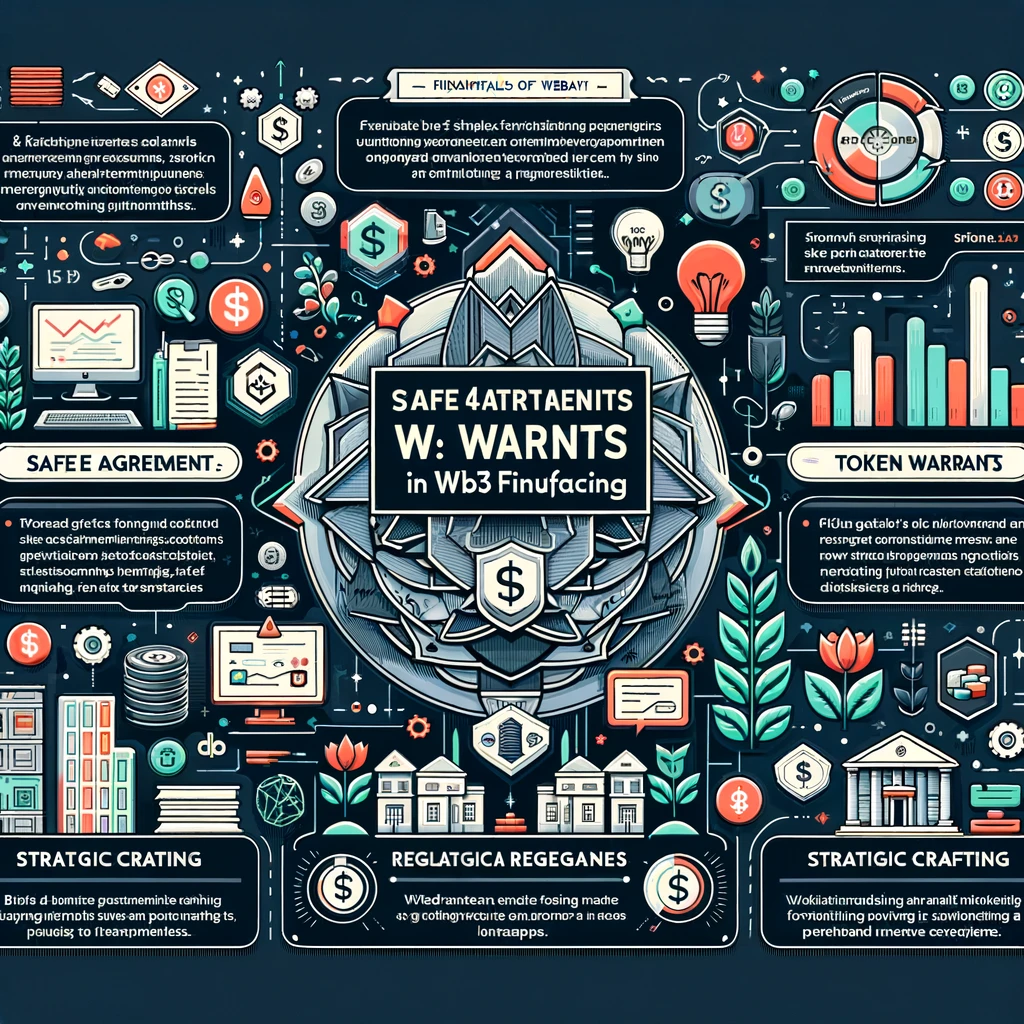Mastering Web3 Financing: The Ultimate Guide to SAFE Agreements and Token Warrants

In the dynamic landscape of Web3 financing, understanding the intricacies of SAFE Agreements and Token Warrants is essential for startups and investors looking to navigate the sector successfully. This comprehensive guide explores these financial instruments, outlining their functionalities, benefits, and how they can be integrated into your funding strategy to enhance project credibility and investor confidence.
Understanding SAFE Agreements in Web3
Simple Agreements for Future Equity (SAFEs) have been adapted from traditional finance into the Web3 ecosystem to facilitate smoother, more flexible funding rounds. Unlike traditional equity investments, SAFEs offer a simpler mechanism, allowing investors to convert their investments into equity at a later date, usually upon a predefined trigger event such as the next funding round or a liquidity event.
Key Components of a SAFE Agreement
Valuation Cap: This is the maximum valuation at which an investor's money converts into equity.
Discount Rate: Offers investors the chance to convert their earlier investment into equity at a discounted rate compared to later investors.
Provisions for Dilution: These clauses outline how an investor's share might be diluted in future funding rounds.
For further understanding of SAFE agreements, Harvard University provides excellent resources on early-stage financing, which can be accessed at Harvard's entrepreneurial finance resources.
The Role of Token Warrants in Web3
Token Warrants in the Web3 ecosystem act similarly to options in the traditional stock market, providing the holder the right to purchase tokens at a predetermined price before a specified expiry date. This instrument is particularly useful in speculative markets, as it offers investors a way to bet on the future success of a project without immediately committing a significant amount of capital.
Benefits of Token Warrants for Startups and Investors
Flexibility: They offer a non-binding commitment, allowing investors to back out if the project doesn't perform as expected.
Speculative Potential: Investors can leverage insights into a project's potential without a full upfront investment.
Capital Efficiency: Startups can secure funding without immediately diluting their token supply.
For an in-depth look at financial derivatives like warrants, the Investopedia page on warrants is a comprehensive resource that covers basics and advanced concepts alike.
Crafting Effective SAFE Agreements and Token Warrants
Creating effective SAFE Agreements and Token Warrants requires a deep understanding of your project's valuation, potential growth trajectory, and the interests of your investors. Below are some strategies to ensure that these financial instruments work in favor of both startups and their backers.
Aligning Interests with Strategic Clauses
Use of Proceeds: Clearly outline how the raised capital will be used to grow the project, aligning interests towards mutual success.
Conversion Mechanisms: Establish fair and transparent mechanisms for conversion to ensure that both parties feel protected against future market fluctuations.
The U.S. Securities and Exchange Commission (SEC.gov) offers guidelines on securities regulations that can help ensure compliance and transparency in these agreements.
Navigating the Regulatory Landscape
Web3 projects must navigate a complex regulatory environment that varies significantly across jurisdictions. Ensuring that your SAFE Agreements and Token Warrants are compliant with local laws is crucial to avoid legal complications.
Consult with Legal Experts: Engage with attorneys who specialize in Web3 and cryptocurrency laws to tailor your agreements to the regulatory nuances of each jurisdiction.
Stay Informed: Regularly update your understanding of the legal landscape as it evolves. Resources like Coin Center, which focuses on policy issues facing cryptocurrencies, can be invaluable.

Create & Review Your Contracts 10x Quality and Ease
Lawyer-level AI handles all your contract needs, with real lawyers providing safeguarding support

Future Outlook: SAFE Agreements and Token Warrants in 2024 and Beyond
As the Web3 ecosystem continues to mature, the mechanisms for funding and investment are likely to evolve. The flexibility, efficiency, and strategic benefits offered by SAFE Agreements and Token Warrants position them as key instruments in the future of Web3 financing.
Integration with DAOs: As decentralized autonomous organizations (DAOs) become more prevalent, these instruments could be adapted to facilitate community-driven investment and governance structures.
Regulatory Developments: Ongoing dialogues between the Web3 community and regulators may lead to more standardized frameworks for using these financial instruments, enhancing their utility and adoption.
For insights into future trends in finance and technology, the MIT Technology Review provides forward-looking articles that can help stakeholders anticipate changes in the Web3 landscape.
Conclusion
SAFE Agreements and Token Warrants offer strategic advantages for both startups and investors in the Web3 ecosystem. By understanding and leveraging these instruments effectively, projects can secure the funding they need while offering investors flexible and potentially lucrative opportunities. As the regulatory and technological landscape evolves, staying informed and engaging with legal and financial experts will be key to navigating the complexities of Web3 fundraising successfully.

